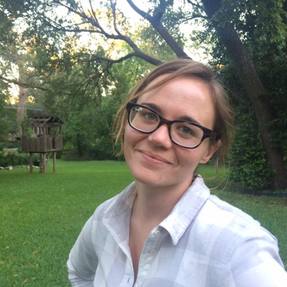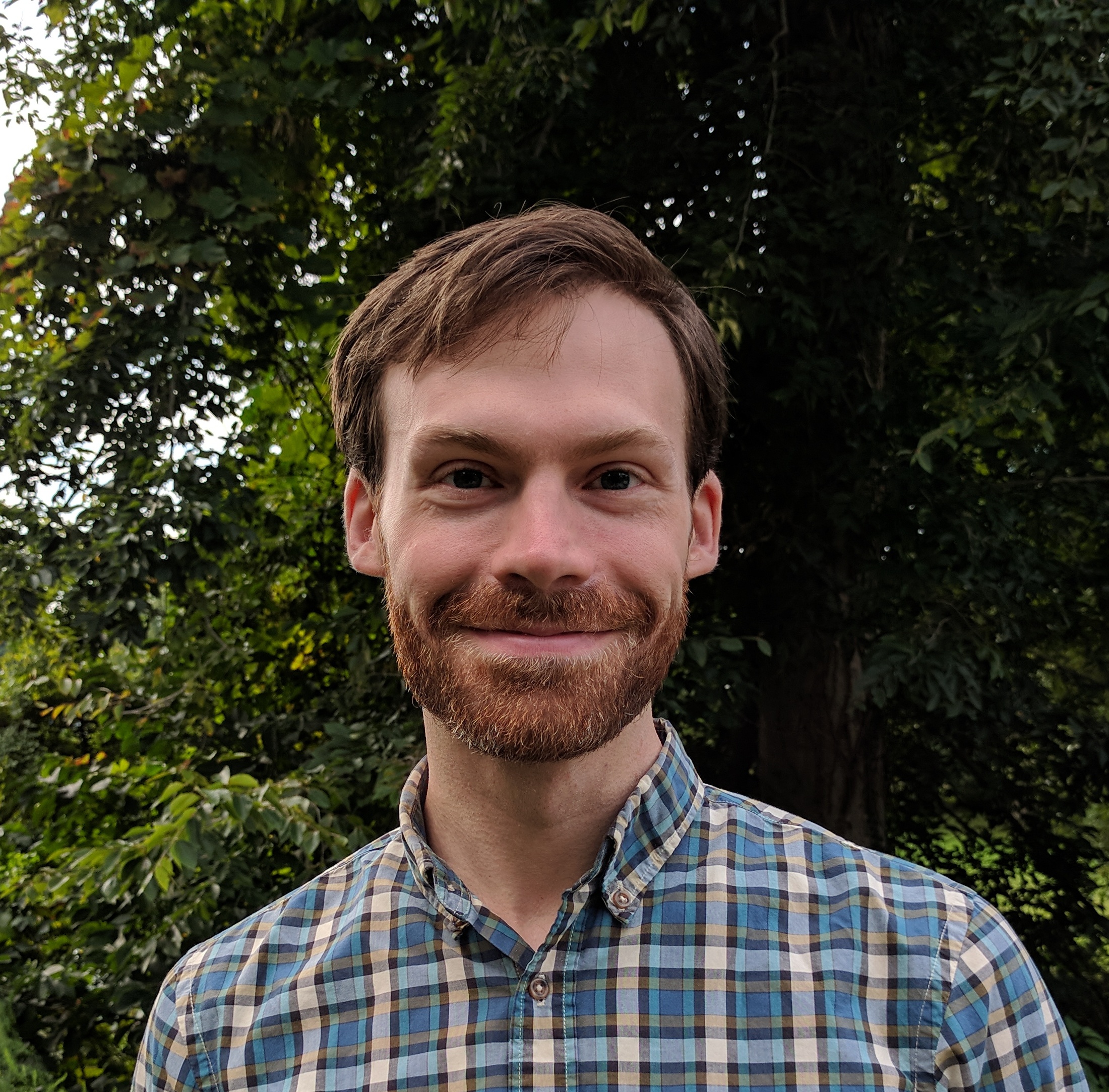Meet GMAO's Newest Civil Servants
09.28.2017
Four new civil servants have taken up their duties in the Global Modeling and Assimilation Office (GMAO) over the past year. They are Andrea Molod, Eric Hackert, Lauren Andrews, and Nathan Arnold.
Andrea Molod
Dr. Andrea Molod received her B.A. in Physics (1979) from Clark University, an M.S. in Meteorology (1982) from the University of Maryland, and her Ph.D. in Atmospheric Dynamics (2003) from Johns Hopkins University in the Department of Earth and Planetary Sciences. Following this, she performed post-doctoral research at MIT in the Department of Earth, Atmospheric and Planetary Sciences.
Andrea is presently a Research Physical Scientist in the GMAO at NASA/Goddard Space Flight Center. Her work throughout her career has primarily focused on understanding and modeling the processes that occur near the land/ocean surface and in the boundary layer, using NASA's GEOS General Circulation Model (GCM) and Assimilation System. A central theme underlying much of her research continues to be the estimation of model subgrid scale variability from observations and other sources, leading to the development of “resolution aware” behavior in the GEOS AGCM, in particular in the moist physics.
Since becoming a GMAO civil servant, in November 2016, Andrea has lead the GMAO's subseasonal-to-decadal prediction efforts. This entails coordinating and leading the development and assessment of the GEOS coupled ocean-atmosphere-land-ice model and assimilation system that is required for subseasonal to seasonal prediction and for ocean reanalysis. In this capacity, Andrea also leads the participation by GMAO in collaborations with other national and international centers for short-term climate prediction.
Andrea has also recently become the GMAO lead of the coupled-chemistry climate model (CCM) development, in collaboration with scientists from the Atmospheric Chemistry and Dynamics Branch. She also works closely with the GEOS-Chem development group at Harvard University. In addition to model development targeted to improve chemistry transport by convection and diffusion, she led the GMAO’s effort to release the GEOS Chemistry Transport Model (GEOS CTM). The GEOS CTM is a new modeling tool that unifies the code base of the chemistry transport models with the main GEOS model, allowing for insights into the difference between these two types of simulations.
Eric Hackert
Dr. Eric Hackert graduated from the University of Wisconsin in 1984 with a M.S. in Meteorology. He joined Center for Ocean-Land-Atmosphere Studies (COLA) at the University of Maryland (UMD) in 1985 where he helped to devise optimal interpolation techniques to assimilate in situ data into an early version of SODA. In May 1989, Eric moved to NASA/Goddard Space Flight Center and worked in the Laboratory for Hydrospheric Processes. In this capacity, he focused on dynamical ocean model development and validation, reduced-space Kalman filter data assimilation, wind sensitivity studies, and data analysis/validation of satellite altimetry. In October 2000, Eric joined Earth System Science Interdisciplinary Center (ESSIC) at the UMD. A main focus during 2000-2008 was the development of the Ensemble Reduced Order Kalman Filter data assimilation technique and subsequent completion of ocean observation sensitivity studies. During 2008-2014, he focused on full utilization of sea surface salinity (SSS) for oceanographic studies. In 2016, Eric received his Ph.D. in Oceanography through the Accomplished Scientist Program at the UMD. His research concentrated on determining the impact of Indian Ocean Sector on El Niño-Southern Oscillation (ENSO) predictability via the oceanic contribution, the atmospheric teleconnection, and via data assimilation. In addition, he confirmed that assimilation of Aquarius satellite SSS improved ENSO predictability.
Since joining the GMAO in Jan 2017, Eric has participated in the development of the ocean data assimilation system (ODAS) that is integrated with the current coupled forecast system. He has contributed to finalizing the optimal version of the ocean reanalysis experiment and he has helped build code to initialize seasonal forecasts. Besides working on developing the ODAS, Eric is currently a principal investigator on the NASA Ocean Salinity Science Team with funding to explore the impacts of satellite SSS on ENSO prediction. He has found that Aquarius and SMAP SSS assimilation leads to more accurate representation of large-scale ocean waves and better ENSO forecasts. Eric will continue to develop and extend methods to assimilate ocean salinity observations into ocean models and use these results to advance scientific understanding of the Earth System. He will continue to study the coupled atmosphere-ocean dynamics of the El Niño-Southern Oscillation phenomenon.
Lauren Andrews
 Dr. Lauren Andrews recently joined the GMAO as a research physical scientist. Previously, Lauren was a NASA Postdoctoral Program (NPP) fellow in the Goddard Cryospheric Sciences Laboratory, after obtaining her Ph.D. from the University of Texas at Austin in 2015. Her work focuses on understanding how glacial meltwater can alter the dynamic response of ice sheets and glaciers to the climate system. Her prior work has focused on how changes in meltwater supply impact the spatial and temporal evolution of the subglacial hydrologic system and consequently ice flow on the Greenland Ice Sheet. To this end, Lauren has utilized a range of observational techniques, including field observations, satellite remote sensing, and numerical models to better understand the glacial hydrologic system as a whole.
Dr. Lauren Andrews recently joined the GMAO as a research physical scientist. Previously, Lauren was a NASA Postdoctoral Program (NPP) fellow in the Goddard Cryospheric Sciences Laboratory, after obtaining her Ph.D. from the University of Texas at Austin in 2015. Her work focuses on understanding how glacial meltwater can alter the dynamic response of ice sheets and glaciers to the climate system. Her prior work has focused on how changes in meltwater supply impact the spatial and temporal evolution of the subglacial hydrologic system and consequently ice flow on the Greenland Ice Sheet. To this end, Lauren has utilized a range of observational techniques, including field observations, satellite remote sensing, and numerical models to better understand the glacial hydrologic system as a whole.
As a member of the GMAO, Lauren’s work focuses on improving the representation of the glacial system and the formation and fate of glacial meltwater within the GEOS Earth System Model. This includes the study of meltwater routing through the supraglacial, englacial, and subglacial hydrologic system and its impact on the spatiotemporal pattern of ice sheet runoff delivery to the ocean and its subsequent impacts on patterns of ocean circulation, sea-ice formation, and sea level. Lauren is particularly interested in the incorporation of in-situ observations and process-oriented modeling results of the glacial hydrologic system into the GEOS modeling and analysis framework.
Nathan Arnold
 Dr. Nathan Arnold earned a Ph.D. in climate dynamics at Harvard University in 2013, based on his research into atmospheric super-rotation and the Madden-Julian Oscillation (MJO). He completed a postdoctoral fellowship at Colorado State University, where he used super-parameterized models to better understand the physical feedbacks controlling the MJO, and how they may respond to global warming. Nathan joined USRA/GESTAR in 2015, using GMAO products for research and working with the GEOS model development team to improve model physics. His work has included studying the spatial organization of clouds in the 7 km Nature Run, implementing a shallow convection parameterization, and evaluating the MJO in recent versions of GEOS.
Dr. Nathan Arnold earned a Ph.D. in climate dynamics at Harvard University in 2013, based on his research into atmospheric super-rotation and the Madden-Julian Oscillation (MJO). He completed a postdoctoral fellowship at Colorado State University, where he used super-parameterized models to better understand the physical feedbacks controlling the MJO, and how they may respond to global warming. Nathan joined USRA/GESTAR in 2015, using GMAO products for research and working with the GEOS model development team to improve model physics. His work has included studying the spatial organization of clouds in the 7 km Nature Run, implementing a shallow convection parameterization, and evaluating the MJO in recent versions of GEOS.
In his new role, Nathan will continue work on model evaluation and development, focusing on turbulence, convection and the atmospheric boundary layer. He is currently implementing a new turbulence parameterization, designed to improve diurnal variability and the representation of low level clouds. He is also developing a parameterization of boundary layer cold pools and their interaction with convection, and using high resolution global simulations to study mesoscale cloud structure.

